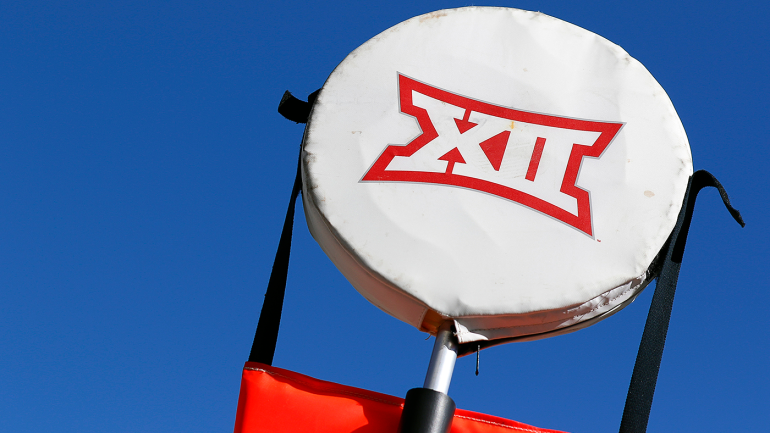
The Big 12 is involved in deep discussions to add multiple Pac-12 programs as a way to shore up its membership in the wake of the USC and UCLA defection to the Big Ten, sources tell CBS Sports. At least four teams are being considered with the potential for the Big 12 to add more as realignment continues to shake out.
Arizona, Arizona State, Colorado and Utah were mentioned specifically as the teams being targeted by the Big 12, sources tell CBS Sports. There is also consideration of adding Oregon and Washington to make the Big 12 an 18-team league, the largest in the FBS.
A merger of the Big 12 and Pac-12, in some form, is also a possibility.
"Everything is on the table," said one Big 12 source.
There is "no question" the Big 12 has to be aggressive in expansion, another conference source said.
Despite the Big 12's attempts, the Pac-12 released a statement Monday saying it would immediately begin negotiations on its next TV contract, intending to go forward with at least its 10 remaining members. There is a possibility more could be added to the mix, according to a Pac-12 source. The Pac-12's current deal expires in 2024
However, a source familiar with the negotiations said that doesn't necessarily mean the Pac-12 will all be together "in three months."
The Pac-12 is expected to enter into an exclusive 30-day negotiating window with current rightsholders Fox and ESPN before entertaining offers from other bidders.
Before the Pac-12's statement Monday, one industry source suggested the Big 12 should quickly expand with Pac-12 teams then go to market early with rightsholders to get ahead of the Pac-12. The Pac-12 deal with Fox and ESPN expires in 2024. The Big 12's deal with the same networks expires in 2025.
"All those things have been talked about," a Big 12 source said.
Adding at least those four schools would extend the Big 12 further into the Mountain Time Zone, creating "travel partners" for incoming member BYU while also adding a rival for the Cougars in the Utes. The Arizona schools are two hours apart and feature Phoenix as a major market acquisition for the conference.
What the Big 12 cannot afford to do, according to multiple industry sources, is stand pat. There is still the lingering question of who even has leverage in adding teams between the Pac-12 and Big 12.
One industry source gave what was termed a slight lean to the Big 12 in being able to snatch teams from the other conference.
The difference in earning value between the Big 12 and Pac-12 would be "negligible" after this round of realignment, but in expanding, the Big 12 would at least be fortifying itself while diminishing the Pac-12.
Arizona, Arizona State, Colorado and Utah bring an annual average value (AAV) that at least matches the 12 members of the Big 12 set to remain with the league once Texas and Oklahoma leave in 2025.
That is one reason why Big 12 expansion would work in this case as the conference would not aim to make its slices of media rights pie smaller. It's not yet known whether adding Oregon and Washington is viewed the same way by the Big 12.
Of course, all of this is assuming Fox, a half-partner with ESPN in both conferences, is even interested in doing a deal with one or both reconstituted leagues. If not, ESPN could become the primary rightsholder, if so interested.
There is a relationship to be repaired with the Big 12 after outgoing commissioner Bob Bowlsby alleged last summer a conspiracy involving ESPN, the SEC and the American. New commissioner Brett Yormark starts Aug. 1.
The Pac-12's projected AAV dropped significantly from $500 million annually (approximately $42 million per school) to $300 million ($30 million) for the remaining 10 teams after the league lost USC and UCLA, according to the San Jose Mercury News.
Navigate, a sports and entertainment consultant group, stated in March that members of a 12-team Big 12 would earn $52 million by 2029. Other industry insiders have disputed that figure.
Notre Dame's "preference" is to remain independent, according to Sports Illustrated. The possibility of earning $80 million to $100 million in the Big Ten could impact that stance, but Notre Dame has left money on the table before -- actually for decades.
The Fighting Irish have historically valued their scheduling independence and one-of-a-kind marketing power. If Notre Dame stays independent, the attention is clearly on the Big 12 and Pac-12 in realignment.
The consolidation of money and power at the top among the 32 programs in the SEC and Big Ten has sent shockwaves throughout college athletics.
What will a playoff look like in 2026 when a unanimous vote is no longer needed to approve an updated structure? Will there even be a playoff?
It is imperative that 98 schools below the SEC and Big Ten try to get as close to the superconferences as possible. The ACC is locked into its deal until 2036, assuming there are no defections.
For the Big 12, having the flexibility to increase its earning power, media markets and branding are attractive enough reasons to consider expansion.





















